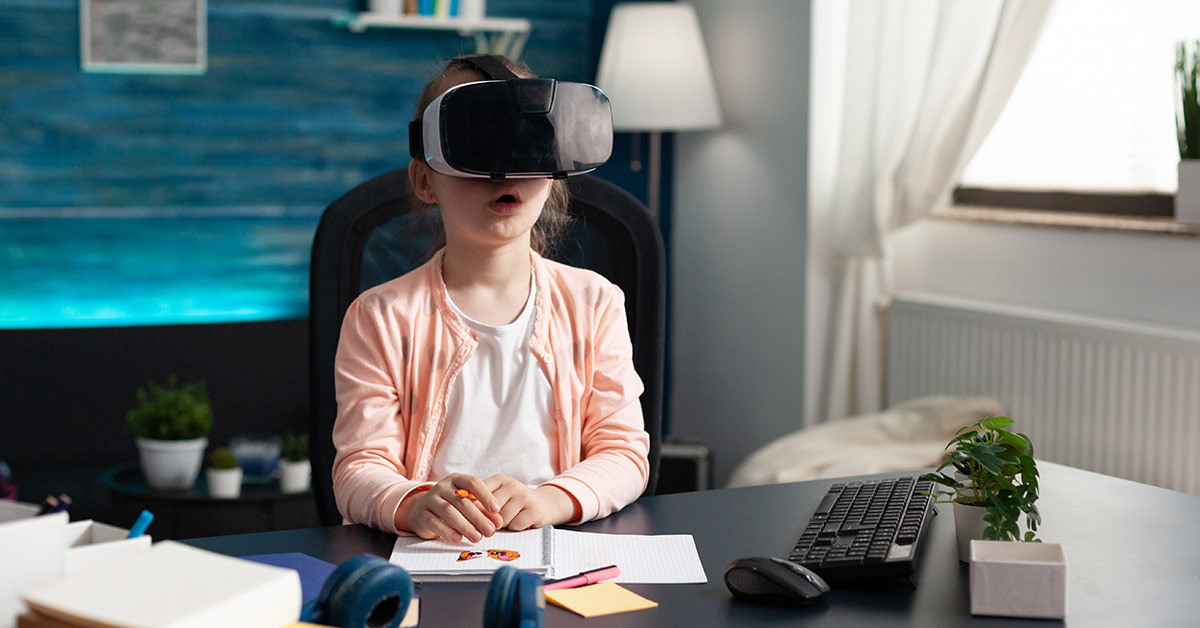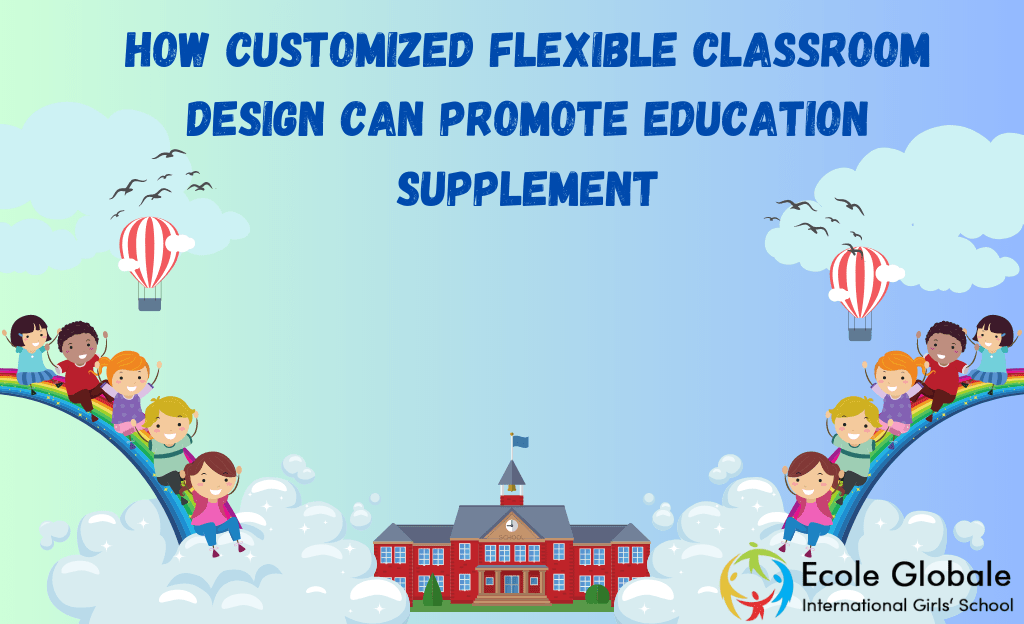According to the Boarding schools in India, Every school year, we welcome new students into a community of highly-specialized learning and development of education supplement. These students might have fewer skills in specific areas than others because they haven’t been exposed to them before. Even when their unique capabilities make them stand out, educators need to provide the support that helps each student develop. Some students may need more attention or an environment more adaptable to their abilities.
The connection between teachers, students, and technology has improved a lot. But physical classroom design needs to undergo a radical change to make this more effective for teaching students about education supplement. The physical design of a school can either hinder or enhance student learning and also development of education.
Significance Of Classroom Design

At a time when budgets are tight and curriculums are long, teachers and district leaders may struggle to build more effective environments for students. Classrooms are still based on the old analog style, which does not help the students and teachers to get optimal use.
Flexible designs that take a customized approach and incorporate safety protocols have replaced traditional infrastructure as the new standard. A student’s first classroom is his environment. While one can improve curriculums to the finest extent, improving the learning environment for a student can have exponential benefits.
The traditional brick-and-mortar institutions, which were replaced by our digital screens, are now coming back into play. Given the loss of learning outcomes during the pandemic, it is now more pivotal to build and reform institutions to embody learning from their surroundings.
1. Flexibility is the key
A flexible space can be configured to accommodate many uses. Flexible classrooms are becoming a trend in schools today due to the growing demand for them. There are many benefits of having this kind of classroom design.
An example of how this can be achieved is by creating a classroom environment that allows teachers to change the layout depending on what is being taught at any time. Students enjoy more freedom to learn in an environment that suits their learning style.
For example, if you’re teaching a group of students who have a preference for sitting down while working on their assignments, you could create an area where they can sit comfortably while working on their laptops and doing group work together using whiteboards or paper printouts. You could also set up another space where students who prefer standing desks can work independently or pair up with other classmates for collaborative projects like making presentations and education supplement.
Various schools across the world have started implementing innovative designs that are flexible and customized to suit the needs of each student.
These new designs include:
- Flexible Classrooms
- Open Plan Schools
- Floor Plans with Multiple Zones
Classrooms need to be changed to flexible classrooms to be enough to cater to all needs.
2. Modular Classrooms
As technology continues to revolutionize the education sector, new ways of teaching and learning are emerging. Modular classrooms are designed with flexibility, allowing you to create a learning environment that best suits your needs and development of education supplement.
Modular classrooms are rooms that can be built at any time and moved around as needed. They often comprise a series of interlocking units that can be assembled on-site and disassembled when finished.
They come in all shapes and sizes and work well in conjunction with other facilities- playgrounds or sports fields because they can be moved around as needed. There are many different types of modular classrooms available.
Classroom pods –
These pods are useful for any type of classroom space- science labs, offices, or meeting rooms
Open-plan classrooms –
if you do not want your students sitting in rows facing the teacher, then open-plan classrooms may be more suitable.
3. Efficient Furniture Use

Students are more engaged and productive when they have the right furniture. But the needs of students are unique, and one-size-fits-all solutions do not work. From their posture to an engaging setting, the right furniture in a classroom can have benefits one cannot even think of!
A well-designed, customized classroom can make a huge difference in student learning. It is no secret that physical spaces can have a significant impact on how students learn. Classrooms are where we do most of our learning, so it is imperative to design them to be as effective and efficient as possible.
The solution is to use modular furniture systems. These products allow you to create customized spaces with lots of flexibility and variation to meet your needs exactly as they change over time.
4. Creating Open Learning Areas

Creating open learning areas is one way that educators can change education supplements by using technology. The first step in creating such an area is by analysing the parameters of the room that you want to transform into an open learning area.
Research indicates that children learn more effectively when they are allowed the freedom to explore their physical environment. Schools that create such environments cultivate meaningful connections between children and their teachers.
They also foster more active and socially engaged students. Any school design must replace traditional intimidating institutional architecture with something more conducive to learn education supplement.
A design that is both functional and aesthetically pleasing will add to the learning experience of students. It can be not easy to create a space that meets the needs of all students, but it is possible with an open-plan classroom.
Open-plan classrooms are flexible and allow for customization based on individual student needs. It can be used in various settings- primary schools, secondary schools, universities, and workplaces.
5. Use of Technology for Development Education Supplement

As technology advances, classrooms are more adaptive to student needs. It can be easily adapted for different types of learning. While it is true that classroom technology can be a powerful tool in the hands of teachers, not all classrooms are created equal. The physical space and resources of a school affect the learning in its classrooms.
Technology can be used as a tool to help students education supplement and learn new skills and concepts in class. It can also be used outside the classroom to develop education supplement and as an alternative way to engage with pupils who may find traditional teaching methods difficult. Incorporating technology inside classroom spaces will intrigue students and make learning a more efficient experience.
6. Architecture as a tool

Architecture plays an important role in shaping our lives by creating a functional and aesthetically pleasing environment. The discipline has evolved from designing buildings and structures for practical purposes only to including elements like sustainability and aesthetics.
Contemporary school design should be a child’s first introduction to the world around them—a place for excitement, exploration, and self-discovery. To accommodate all these styles, we need design spaces that can adapt to the needs of different learners. The aim is to create a space where the teacher is free to choose what they want their classroom environment to look like at any given time.
Benefits of flexible classrooms education supplement:
Here are five benefits that make customized, flexible classroom designs for changes in education supplement so beneficial for students and teachers alike:
1) Customisation makes learning more engaging.
2) Flexibility allows teachers to adapt lessons to accommodate different needs.
3) Privacy creates an environment conducive to learning.
4) Adaptability helps with future-proofing as technology changes over time.
5) Collaboration improves collaboration between teachers and students.
Conclusion
Educational institutions play an imperative role in shaping the future of students. Classrooms are not just rooms with desks, chairs, and chalkboards. They are a vital component of education supplements. It elevates the learning experience.
If we get these things right, we can have better outcomes inside classrooms and outside them as well with a customized, flexible classroom design, teachers can create their learning environments to suit their needs and the needs of their students. They can connect more easily with students and share information in real time. The result? More engaged students and happier staff.






